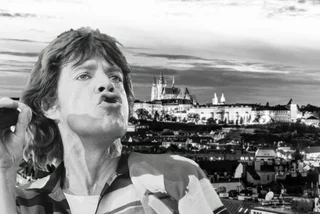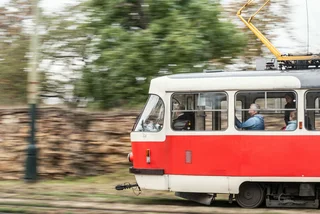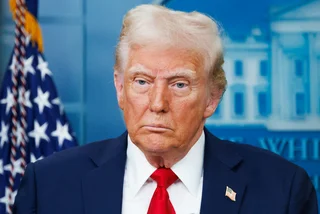The Prague Stock Exchange this month celebrates 150 years since its first trades, though its history has significant gaps due to wars and politics.
The exchange got off to a relatively late start, opening a century after one in Vienna, but it quickly became important due largely to sugar trade. Efforts had been made to open a Prague exchange right after the one in Vienna, but Empress Maria Theresa didn’t want the Austro-Hungarian capital to have a rival.
Around 400 founders, sources disagree on the exact number, put up 29,870 gold coins to provide sufficient capital to establish and maintain the Prague Stock Exchange. The founders were mostly Czech merchants, including prominent sugar merchant Alois Oliva and people from the insurance and railway industries. The first stock trades took place April 17, 1871, between 11:30 a.m. and 1 p.m., in a commercial building on Na Příkopě in Prague’s New Town.

In the first year, an Exchange Committee was established and rules were drawn up to set a clear trading structure and eliminate off-exchange trading in places like cafés. Initially, the Prague Stock Exchange handled both commodities and stocks. The main item of interest was sugar, and the exchange was the most important for that commodity in all of Austria-Hungary.
Not everyone could become a stock trader. Until the establishment of an independent Czechoslovakia, stock exchange rules excluded women from trading. Also excluded were debtors, convicts, and owners of companies in bankruptcy. Convicts, though, could trade three years after completing their sentences.
By 1873, the stock market was already successful, with 59 companies listed for trading, though very few members of the general public became involved in buying shares. It was mostly used by the elite. The first pause in trading came in 1914, with the outbreak of World War I, and trading didn’t resume until the end of the war, which also coincided with the birth of Czechoslovakia.

First Czechoslovak Republic Finance Minister Alois Rašín significantly contributed to its revival by supporting not only the idea of a stock exchange but also for a new Czechoslovak currency. The exchange also moved its focus from goods and securities to almost exclusively securities. Competition with the Vienna Stock Exchange, among others in Europe, began to heat up, as the Czechoslovak crown, in which many stocks were denominated, proved to be a safe haven against post-war inflation.
Trading became so robust that the previous methods of direct exchange had to be abandoned and a clearing house was established. Other securities such as derivatives began to be sold, but were not very popular, according to the PSE website.
A purpose-built building was created for the exchange on Wilsonova Street, and trading started on April 1938. Trading there didn’t last long. World War II brought another pause in activities, as the occupying Germans from March 1939 only allowed foreign exchange transactions, and even those ended in early 1943.

In August 1943, the building was confiscated for the needs of the adjacent opera house (now the State Opera), and in January 1945 a German military collection hospital was established in the building. During the communist era, after a modern renovation and expansion in 1969, it was the Czechoslovak Parliament. After the split of Czechoslovakia in 1993, it was home to Radio Free Europe until 2009, when the National Museum took it over as an exhibition space.
A few efforts at reviving stock trading were made after the end of World War II, but never took off. The communist authorities in 1948 definitively banned the idea, and it remained that way until after the Velvet Revolution.
A new Prague Stock Exchange began operations on April 6, 1993, with a volume of trades worth CZK 2 million and seven listed companies on the first day. The opening of the exchange had support from the French government and help from the Lyon Stock Exchange. Trading began in leased premises on Na Můstku Street but soon moved to the newly built Stock Exchange Palace at Rybná 14, where it still operates today.












 Reading time: 3 minutes
Reading time: 3 minutes 






























